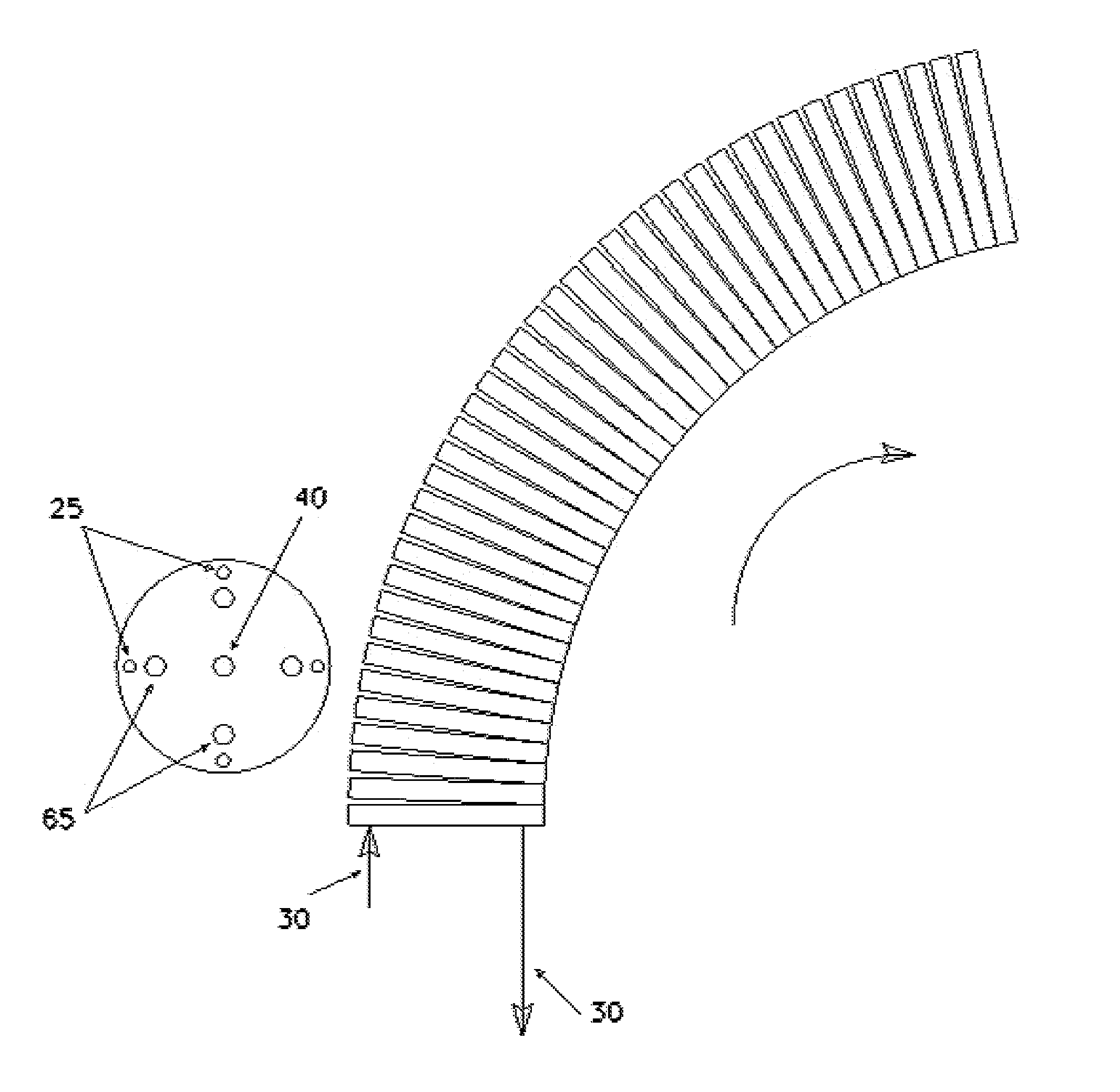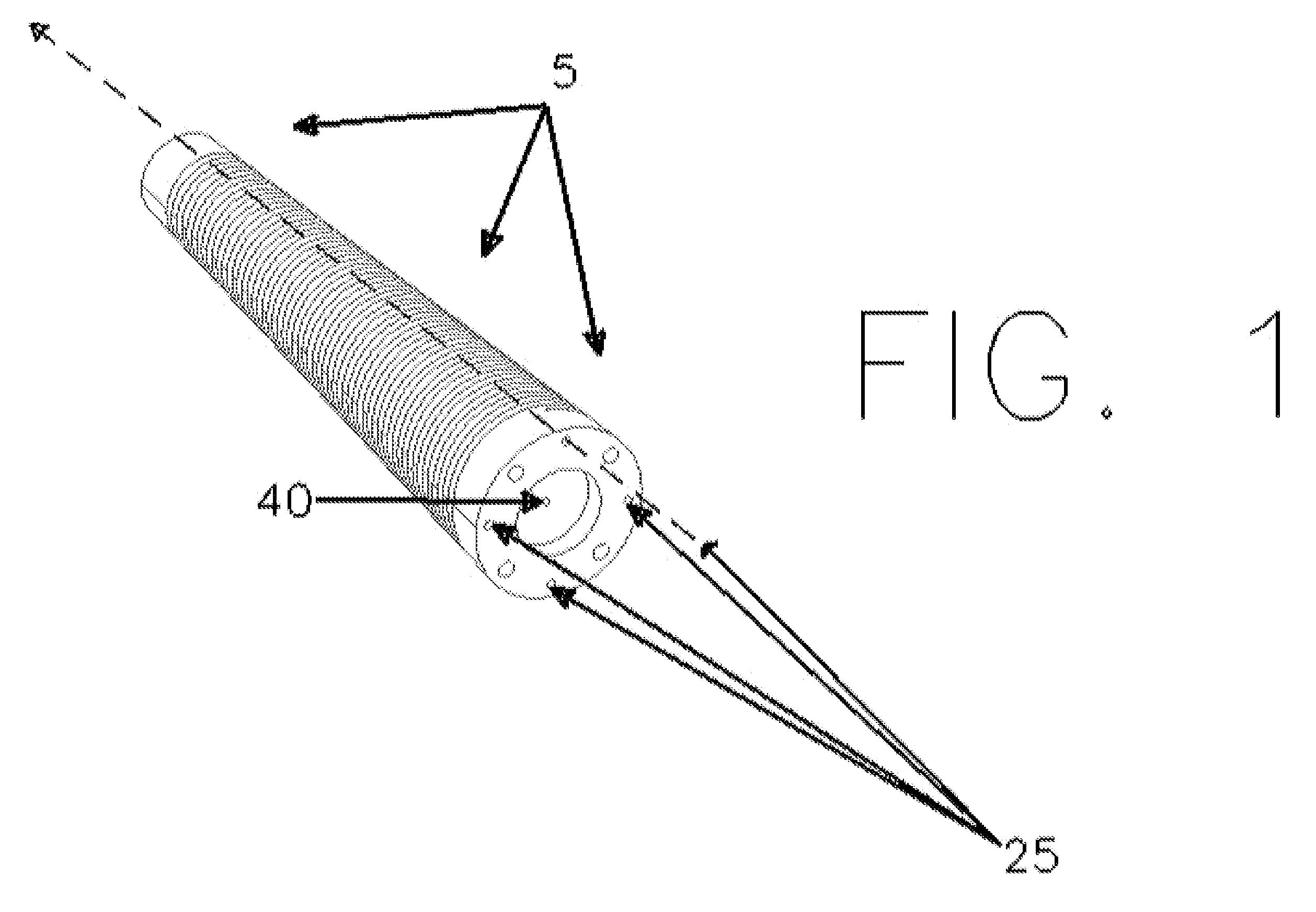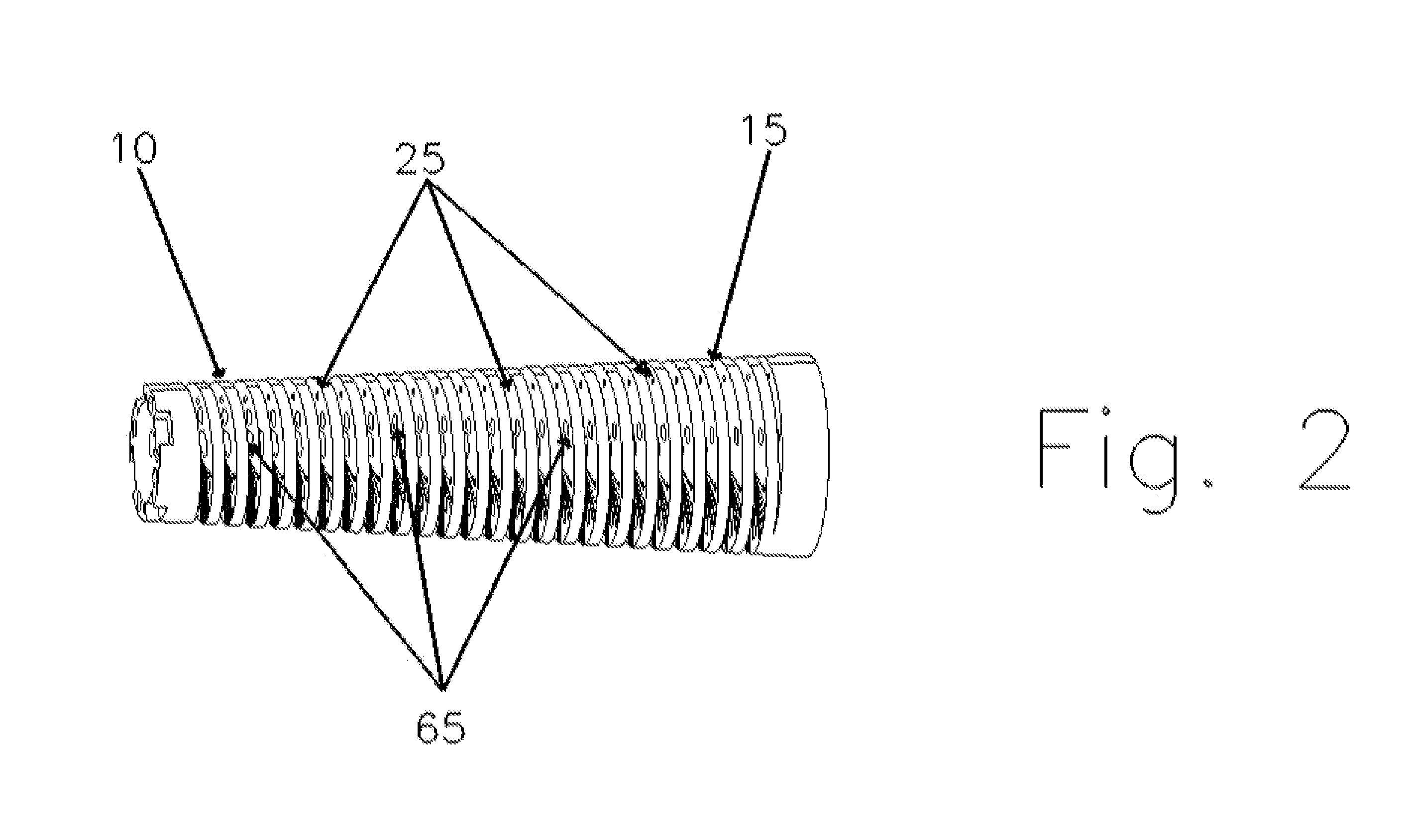Tentacle mechanism
a tentacle and flexible technology, applied in the direction of load-engaging elements, program-controlled manipulators, joints, etc., can solve the problems of difficult to manipulate objects with arms other than their specialized end effectors, complicated and expensive control, and difficult for hard robots to operate in certain types of unstructured and congested environments
- Summary
- Abstract
- Description
- Claims
- Application Information
AI Technical Summary
Benefits of technology
Problems solved by technology
Method used
Image
Examples
Embodiment Construction
[0026]The robotic arm 5 of the invention is a flexible appendage for use as a robot arm.
[0027]The robotic arm is a single spiral 10 made of flexible material, which can bend in all direction and has high dexterity. The robotic arm moves in three dimensions upon actuation as described below.
[0028]The robotic arm is able to grip complex shapes and manipulate delicate objects. Embedding functional components into these devices (for example, a needle for delivering fluid, a video camera, or a suction cup) extends their capabilities.
[0029]The robotic arm is defined by a helicoid 15 (FIGS. 1, 10) wound with turns. The pitch of the helicoid turns as well as the thickness of each winding are all variable.
[0030]Control path passageways pathways (CPP) 25, in one embodiment, comprise control lines 30 distributed around the axis. In any respect, it should be understood that, lines, wires or even flat, tendon-like strips, either housed or un-housed, pull the tentacle, and are referred to herein ...
PUM
 Login to View More
Login to View More Abstract
Description
Claims
Application Information
 Login to View More
Login to View More - R&D
- Intellectual Property
- Life Sciences
- Materials
- Tech Scout
- Unparalleled Data Quality
- Higher Quality Content
- 60% Fewer Hallucinations
Browse by: Latest US Patents, China's latest patents, Technical Efficacy Thesaurus, Application Domain, Technology Topic, Popular Technical Reports.
© 2025 PatSnap. All rights reserved.Legal|Privacy policy|Modern Slavery Act Transparency Statement|Sitemap|About US| Contact US: help@patsnap.com



